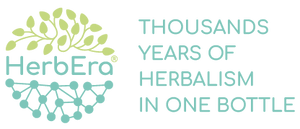History of Herbalism

Herbalism is an ancient science that was built around thinking heads like modern medicine. The use of fresh and dried plants in infusion, herbal tea, decoction, tonic, essential oil, vegetable oil, or even floral water is very widespread today. Indeed, some great figures of herbalism have largely participated in collecting information and advancing herbal medicine and popularizing it. Let’s discuss some interesting facts about the history of herbalism!
History of Herbalism
Herbalism is marked by the history of herbalists, apothecaries, and medicine, which undoubtedly impacted the medical system of the time. Several individuals are considered to be "great figures of herbalism."
Dioscorides, a Greek Physician
Dioscorides is probably the most popular and renowned herbalist, known as the father of herbalism. He was one of the first to contribute to the development of herbalism in the ancient world.
Dioscorides wrote the botanical work better known by its Latin name: "DE Materia Medica," around 60 AD. He described the medical use of more than 1,600 products, which significantly influenced the history of medicine and herbalism.
Hildegarde Von Bingen the Doctor of the Church
Hildegarde was a German nun who also made great strides in herbalism. She is one of the first women to highlight the benefits of plants and minerals. She was then the first naturalist in Germany for her divination and healing.
She wrote remarkable works on medicine, such as Liber vitae moratorium between 1158 and 1163 and the Liber DivinorumOperum between 1163 and 1174 that acquired her fame as a doctor. She listed several species of plants and indicated how to obtain remedies from these plants or animals.
Carl Von Linné, the Scientist of Nature
Carl Von Linné is undoubtedly one of the great figures of herbalism and phytotherapy, who devoted their life to naming objects and living things to lay the foundations of the modern system of binomial botany. His reference work is undoubtedly Systema Naturæ (System of Nature) which knows many copies and reissues.
With the tenth edition of his work in 1758, Carl von Linné generalized the system of binomial nomenclature. The defined classifications and terminologies bring a common language to the scientific and botanical world.

Henri Leclerc, a Great Phytotherapist
Many describe him as one of the masters of modern herbal medicine. He is recognized for using plants to design medical botany recipes from ancient books. He introduced phytotherapy with his work Précis de Phytothérapie and then created a journal specific to this discipline, in which he demonstrated the benefits of using plants for medicinal purposes.
Even today, phytotherapy is very present in current pharmacology, creating remedies as "alternative medicine."
The history of herbalism is undoubtedly marked by the work of these four figures, who played a leading role in the rise of herbalism. From Dioscorides to Henri Leclerc, all dedicated their lives to studying plants, naming them and sharing their works to guarantee the health of populations. There are three main sources of herbal tradition that come from ancient times.
Now, let’s discuss the main sources of herbalism and some widely used herbs!
Medicinal Herbs
Since antiquity, plants have been the primary healing tools and have numerous virtues that can be effective in different ailments such as digestive disorders, respiratory infections, cutaneous, and many others. The effectiveness of plants in natural medicine is proven by numerous studies demonstrating the capacity of plants to act on our bodies thanks to a set of active ingredients working in synergy.
Here are some examples of common aromatic and medicinal plants:
- Star Anise: It relieves digestive problems and, in particular, aerophagia.
- Basil: This very fragrant herb improves digestive comfort, has antioxidant properties and prevents cardiovascular disease.
- Cinnamon stimulates the immune system, is a general anti-inflammatory and has many other anti-infectious properties.
- Birch: the sap of this tree detoxifies and strengthens the body.
- Thyme: This aromatic herb, in addition to being used as an aromatic herb, helps digestion, alleviates respiratory ailments (bronchitis, coughs, colds, etc.) and certain skin conditions such as acne.
- Turmeric: this root is a staple of herbalism. Turmeric is a natural painkiller, an antioxidant that boosts immunity and helps digestion. It is especially widely used to relieve joint pain.
- Dandelion: a plant rich in vitamins and minerals. Its roots, leaves and flowers have many digestive, detoxifying, diuretic and fortifying properties.
- John's Wort: it is known to have healing and diuretic properties
- Nettle: in the form of soup or infusion, it is recommended in cases of anemia.
- Chamomile stimulates the appetite and helps to cry out the nerves and irritability.
We hope that the information above has helped you understand the history of herbalism. Herbal medicine is the oldest form of medication worldwide and has also been used widely today. There’s nothing better than integrating these virtuous herbs into your daily intake through supplements and benefiting from their medicinal properties.

